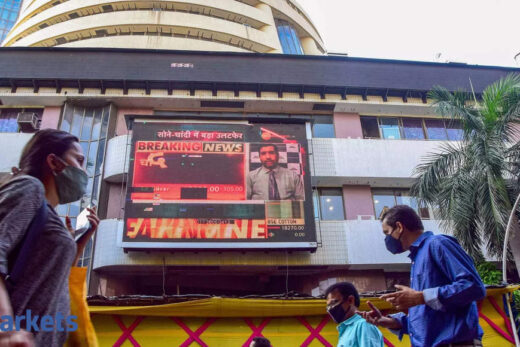Can we get your perspective on how resilient the industry has been at a time like this and through the pandemic?
When it comes to resilience, I think it is basically an expression of character. I think it is an attitude; it is a mindset. We have been tested adequately by both the economic cycles and aspiration of the country to break free and become a large developed economy, along with our own aspiration for better lifestyle and better comfort. All of this put together finds its way as objectives; some commercial, some social in different parts of the country and we represent an organisation which actually seeks to build good quality infrastructure for people to live and operate in the country.
This has never been easy because creating assets in a public space calls for tremendous amount of grit, foresight, commitment and endurance. Now all of this in a way packages itself into the resilience that you are talking about. The reason the pandemic has not made things easy is we never know whether we are done with it because as we lockout and unlock, there is again a fear of something coming back. All that we can do is stay safe and get ourselves vaccinated and observe all safety protocols.
Having said that, the company has been looking at all of these opportunities for us to build India – to in some sense rebuild India – because I think over the last 60-70 years the country has moved in a certain direction. The next 20 to 40 years look very exciting because as the new generation takes over the reins of the country in terms of its economic fortunes and social fortunes, there is an opportunity for us to recreate. We always believe in our company; that construction happens on the back of a destruction.
We need to destroy something to construct something. But except that the destruction has to be very responsible. There is a tremendous amount of conversation around the globe for creating very a sustainable planet. The growth all around – developed economies, under developed economies, developing economies – all of us have in a way contributed to the pollution levels in the world and it is our collective responsibility to make sure that we in some way clean up the mess that the development processes have created and leave the world a better place for the next lot of people to kick in and operate. The move towards ESG, sustainability in business, in practices, in processes, etc., is all adding up in a way to the resilience and sustainability that you talk about.
There does seem to be a sense of capex revival that is looming across the industry. Do you sense that optimism at this point with regards to the economic recovery?
I think we are looking at it at a time when things are low and the chips are down. The only way to look ahead now is to look forward and move north. There is definite potential for the country to kick ahead with the plans for investment in infrastructure because that is very fundamental to the economic, industrial, and commercial operations of the country. The budget that got announced by the government before the second wave broke placed considerable emphasis on investment in creating this infrastructure.
It is also a very sensible thing to approach growth because it creates employment and creates multiplier effect. Consequently, capital expenditure is an integral part of this entire journey of investing in better facilities and infrastructure. We do believe that the government programmes would have their place in the whole position because their ability to kickstart the entire investment cycle is that much better. It has also enabled because lot of multilateral funding is available for supporting good credible programmes.
Consequently, I would expect that the government programme kept going. Hopefully with the vaccination improving and the second wave receding, assuming that all of us stay responsible, I do see the second part of the quarter that we are stepping into – that is the July-September quarter onwards – I would expect to see the momentum return. We are as a company preparing ourselves to meet that opportunity and preparing our bids to be submitted as we speak.
While the ordering momentum has slowed down from April to date, we expect that recovery to come back. It pretty much happened the same way last year. Last year if you remember, it was year of two halves. The first half was very subdued; they were uncertain times. Then the second half meant that we recover faster than what we anticipated. Having lived through one wave of this, I think we should be better prepared to take advantage of the revival and that could happen in the second half of the second quarter of the current year onwards.
As far as capex, I think the PSUs and the government-sponsored programmes like high-speed rail, dedicated freight corridor and the general infrastructure programmes that we talk about in terms of metro, water, power distribution, etc., would continue because they are an inherent part of the government infrastructure bill plan. As far as private sector capex is concerned, it would be in patches I would think because the investments that are happening around the EV space are quite interesting. With the revival of the minerals, metals, prices, the investments around metal sector and the mining sector are also pretty interesting.
India is becoming a fairly recognised power house for backend processing and data storage and retrieval. I see a lot of opportunities in the area of data centres being built with all the freight corridors. I think there is a great opportunity for logistics infrastructure to play out in India, so I would expect that to come in. Most of this could come from private sector.
Finally, in terms of the healthcare sector, the pandemic has sort of exposed how inadequately prepared we are for a large-scale healthcare delivery system. I would expect that the healthcare sector, particularly the private sector, look at the opportunities that are available as India seeks to have a better coverage of healthcare to invest in hospitals and facilities. Real estate sector has been very subdued over the past couple of years; the commercial real estate particularly given the fact that the last 18 months has seen people work from home, etc.
The entire question around viability of large office spaces has come up for discussion, but we will have to wait and watch as to how much of ‘work from home’ is going to be the norm and how much of it is going to be hybrid. I do believe that there will be definitely a certain amount of demand returning to commercial real estate.
As far as residential real estate is concerned, by and large India’s middle class can only afford affordable homes. To that extent, the momentum that was there for high-end residential apartments has receded and I would expect that to continue for some more time. I think a lot of Indians are still seeking to buy their first homes, so I do see lot of affordable real estate development happening. In a way, private sector will have its role to play, but I guess it will follow the PSU and the government expenditure roll out.
When it comes to L&T and businesses that you are in, what do you think needs to be done to alleviate bottlenecks, procurement of clearances, land acquisition, overdrawn litigations?
The conversation around this has been consistent over the last several years. To that extent, I think the awareness of the government and the bureaucracy about facilitating some of these bottlenecks to be removed is pretty high. I do not think there is a topic that the government or the bureaucracy is not aware of. What we are struggling with generally as we build in public spaces is that there are opinion groups, and generally the government tends to go with some sense of consensus. That in a way becomes a bit of a time haemorrhage.
In any project, as you know, if you do not execute in time, you incur additional cost and we can as a poor country ill afford a higher cost of infrastructure. There are reports that you would have yourself seen that the cost of infrastructure in India is higher by at least 20-25% sheerly because of delay. What we have been constantly maintaining as a company is while we recognise that 100% of all clearances may not be possible as we are awarded a project, there has to be a minimum threshold of clearances and approvals that should be obtained. Ideally we should try to create as little windows as is possible for the execution to go running from pillar to post.
Today it is a reality that we have to seek approvals from different quarters of the government. If there is an effort made to consolidate these and manage it at a program level, not only will it attract better participation from the contracting community, but will also invite better funding support because of the ease at which things are being done. We have improved. If you look at the last 10-15 years, things have gotten better, but are we the best in class today? No.
The fact is setting the commitment to execute projects within time, within cost if that intent is well internalised in the government and the concerned departments, and the ministries are also incentivised to keep the cost within control, plans, and more importantly keep the time within schedule would be very important. Today the time haemorrhage is completely borne by the contracting world, which according to me is not sustainable.
There are a few companies like L&T who are large enough to be able to withstand some of these and move forward, but the country’s requirements cannot be met by one L&T. There has to be a lot more companies that should pitch in. This is possible only if their balance sheet’s strength is not tested time and again by cost overruns. And secondly, our own dispute reconciliation settlement systems need to get far more efficient. We spend a lot of time in trying to address the grievances which arise out of time overrun and hence cost overrun.
Our dispute settlement mechanism has to be quick and efficient, and this should fit within the overall context of what I am saying of doing things in time. If something has to be done today, we should target to do it as of yesterday. This mindset transition is something that is very important, if things are to do better than what they are today. But today we are a work in progress as far as this is concerned.



